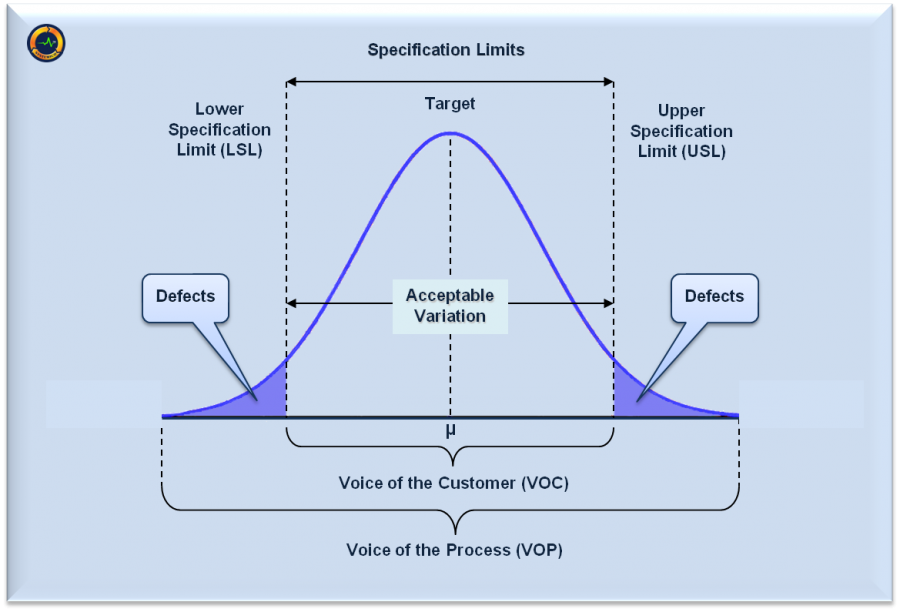Customer versus Consumer
Understanding the Characteristics of Customers
 Graphics courtesy of InvestopediaOpens in new window
Graphics courtesy of InvestopediaOpens in new window
By definition, any internal or external individual/organization who receives the output in terms of product or service of the process is called the customer. S/he is the person who is instrumental in shaping the organizations future and bringing the product in good quality. |
- The person or organization that receives an output from a process is called customer. This person or organization may or may not be the consumer.
- The person or organization that is the end user of a product or service is a consumer.
According to Harrington and Anderson (1999), the characteristics of satisfied customers/consumers are as follows:
- The customer/consumer understands through the producer’s actions that he or she is valued as an individual or organization.
- The customer/consumer understands through actions or proactive plans that the producer will be effective in solving any reliability problem if and when it occurs.
- The customer/consumer is comfortable with the producer’s activities that monitor and communicate product performance.
- The customer/consumer feels convertible in establishing some degree of partnership, sharing responsibility for business investments and benefits.
- The customer/consumer understands through experience that the producer always strives to exceed the specified reliability.
Types of Customers
The customers are broadly classified as follows, according to their defined needs and requirements:
- Current, happy customers
- Current, unhappy customers (include both those who complain and those who do not)
- Lost customers
- Competitors customers
- Prospective customers, that is, those who have not purchased from you or your competitors, but are potential buyers of your products/services
Voice of the Customer
The VOC is a process used to capture the needs/requirements/feedback from the customer (internal or external) to provide the customer with the best-in-class service/product quality. It is all about the strategy and system for continually tracking and upgrading customer requirements, competitor activities, market changes, etc.
Voice of Customer Data Gathering Methods
There are many direct and indirect methods of collecting data through voice of customers. These include traditional as well as non-traditional methods, which are classified as primary and secondary methods.
The traditional methods include surveys, focus groups, interview methods, market research, shopper programs, door-to-door survey, etc. The non-traditonal methods include the data collected through the secondary informations like TV, magazines, journals, newspapers, etc. (a detailed discussion on data collection will be carried out in the subsequent section).
Apart from these, we have some new generation method of collecting information, like targeted and multilevel interviews, customer scorecards, data warehousing and data mining, customer/supplier audits, quality function deployment (QFD), meta data and meta analysis, etc. In fact, these methods are most prevalent as the volume of data available is huge and includes valuable informations to convey.
How to Define Customer Needs and Requirements
Customers define their needs as per their output requirements and service requirements. The output requirements are the features and/or characteristics of the final product or service that are delivered to the customer at the end of the process. Whereas service requirements are guidelines for how the customer should be treated or served during the execution of the process itself. Specifically, a customer requirement depends on the following:
- Identify the output or service situations.
- Identify the customer or customer segment.
- Review the available data on customer needs, expectations, comments, complaints, etc.
- Draft a requirement statement.
- Validate the requirement.
- Refine and finalise the requirement statement.
While identifying core process and key customer, it is always advised to focus on activities that directly add value to customers and involve a mix of people for opinion. See that you are not overloading the process with losts of inouts and outputs without making drastic changes in your core processes.
One of the core requirements of a VOC system will be your ability to identify customer requirements while catching trends, thus helping to keep you ahead of changes in market prefereneces, aware of new challenges and so on.
In this process, if you do not have the access to the correct information, you will miss new opportunities and become vulnerable to new competitors. Although luring the customers is not ideal as people do these days, it is sometime necessary to retain your customer base by offereing sales offers, loyalties and discounts. This will sometime help them to share their confidential views and sentiments with you, by which you can understand their requirements. Figure X-1 explains the VOC from the voice of process (VOP) perspective.
 Diagram courtesy of SystemicoOpens in new window
Diagram courtesy of SystemicoOpens in new window
|
A model being used at a growing number of companies to analyse requirements is based on the work of Noriaki Kano, a Japanese engineer and consultant. In the most common application of Kano analysis, customer requirements are grouped into three categories:
- Basic requirements: These are factors or performance standards that customers absolutely expect to be met. If you achieve these, you do not get any extra credit and, if you miss them, you are guaranteed to have an unhappy customer.
- Variable requirements: The better or worse you perform on these requirements, the higher or lower will be your rating from customer. Price certainly is the most prevalent satisfier; in most cases, the less expensive the price, the happier the customer. Most day-to-day competition takes place over these factors. In this case you will have satisfied customers.
- Latent requirements: These are feature or factors that go beyond what customers expect, or that target needs no one else has addressed. In this case you will have delighted customers.
In some segment of the market like shopping malls, mega stores, etc. delighting a customer have become a route to success. They load the customers with lots of offers and discounts and thus increasing the purchasing power of the customers. This push to offer more, and the tendency of customers to expect more, is one of the major drivers of competition and improvement.
As your business develops a more objective and complete picture of customer requirements, you can also apply a concept like Kano analysis to get a better idea of what the various features and capabilities mean in terms of your customers satisfaction and your competitive edge.
- Weinstein, A. (2002). Customer retention: a usage segmentation and customer value approach. Journal of Targeting, Measurement and Analysis for Marketing, 10(3), 259 – 68.
- Reichheld, F.F. (1996). The loyalty effect: the hidden force behind growth, profits, and lasting value: Boston, MA: Harvard Business School Press.
- Coyles, S. and Gorkey, T. C. (2002). Customer retention is not enough. McKinsey Quarterly, No. 2, 80 – 9.
- Kano, N. (1995). Upsizing the organization by attractive quality creation. In G.H. Kanji (ed.). Total Quality Management: proceedings of the First World Congress. London: Chapman Hall.
- Vivek, S.D., Beatty, S.E. and Morgan, R.M. (2012). Customer engagement: exploring customer relationships beyond purchase. Journal of Marketing Theory and Practice, 20(2), 127 – 45.

